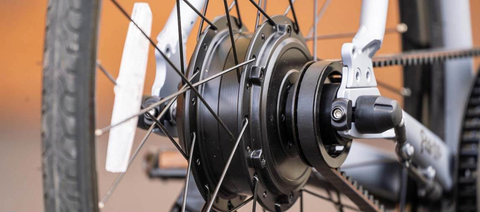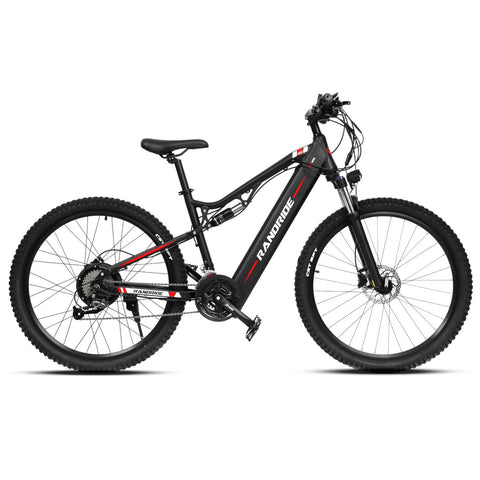Understanding the Principles and Comparison of Mid-Drive Motor and Hub Motor in E-bikes
In the realm of electric bicycles (e-bikes), two main types of motors are commonly used – the mid-drive motor and the hub motor. Each of these motors operates on different principles and offers unique advantages and disadvantages. Understanding the distinctions between these two types of motors is crucial for e-bike enthusiasts looking to make an informed decision about their electric ride. In this blog post, we will delve into the principles, differences, and a comprehensive analysis of the strengths and weaknesses of mid-drive motors and hub motors in e-bikes.
1. Principles of Mid-Drive Motor and Hub Motor in E-bikes

1.1 Mid-Drive Motor
The principle of a mid-drive motor in an e-bike involves mounting the motor at the bike's bottom bracket. This positioning allows the motor to directly transfer power to the bike's chain, enabling the motor to leverage the bike's gears for efficient power transmission. When the rider shifts gears, the motor can adjust its RPM accordingly, ensuring optimal performance and efficiency.
1.2 Hub Motor
On the other hand, a hub motor is integral to the bike's wheel hub, providing direct drive to the wheel. When the motor is activated, it propels the wheel forward, offering a straightforward and simple method of propulsion. Hub motors are known for their ease of installation and maintenance, making them a popular choice for many e-bike manufacturers.
1.3 Differences between Mid-Drive Motor and Hub Motor in E-bikes
The primary difference between a mid-drive motor and a hub motor lies in their positioning and power delivery mechanism. While the mid-drive motor enhances the bike's performance through gear synchronization, the hub motor provides a more straightforward and direct approach to propulsion.
2. Analysis of Advantages and Disadvantages of Mid-Drive Motor and Hub Motor in E-bikes

2.1 Advantages and Disadvantages: Mid-Drive Motor
- Advantages:
- Efficient power utilization through gear synchronization
- Enhanced torque for uphill climbs
- Improved weight distribution for better handling
- Disadvantages:
- Increased wear on the drivetrain components
- Higher cost compared to hub motors
- More complex installation and maintenance procedures
2.2 Advantages and Disadvantages: Hub Motor
- Advantages:
- Easy installation and maintenance
- Simplified design without additional drivetrain components
- Cost-effective solution for e-bike propulsion
- Disadvantages:
- Limited efficiency, especially on varied terrains
- Heavier unsprung weight affecting bike handling
- Less torque output compared to mid-drive motors
3. Differences between Mid-Drive Motor and Hub Motor in E-bikes
While both mid-drive and hub motors serve the primary function of propelling e-bikes, their mechanisms, advantages, and disadvantages set them apart. The choice between a mid-drive motor and a hub motor ultimately depends on the rider's preferences, riding style, and terrain considerations.
RECOMMEND FOR YOU-
RANDRIDE Forerunner
-1000W motor
-Full Suspension
-27 Speed
-20AH Battery
There is still a promotion going on now: Only $99 USD to Get Backup Batteries, don’t miss this event!
Before you go...
After understanding the difference between mid-mounted motors and hub motors, I hope you can choose a motor that suits your riding style based on different characteristics. There is a lot to know about choosing a motor. Read my other article to learn more about ebike motor types...
Which is the best motor for electric bike?











Efterlad en kommentar